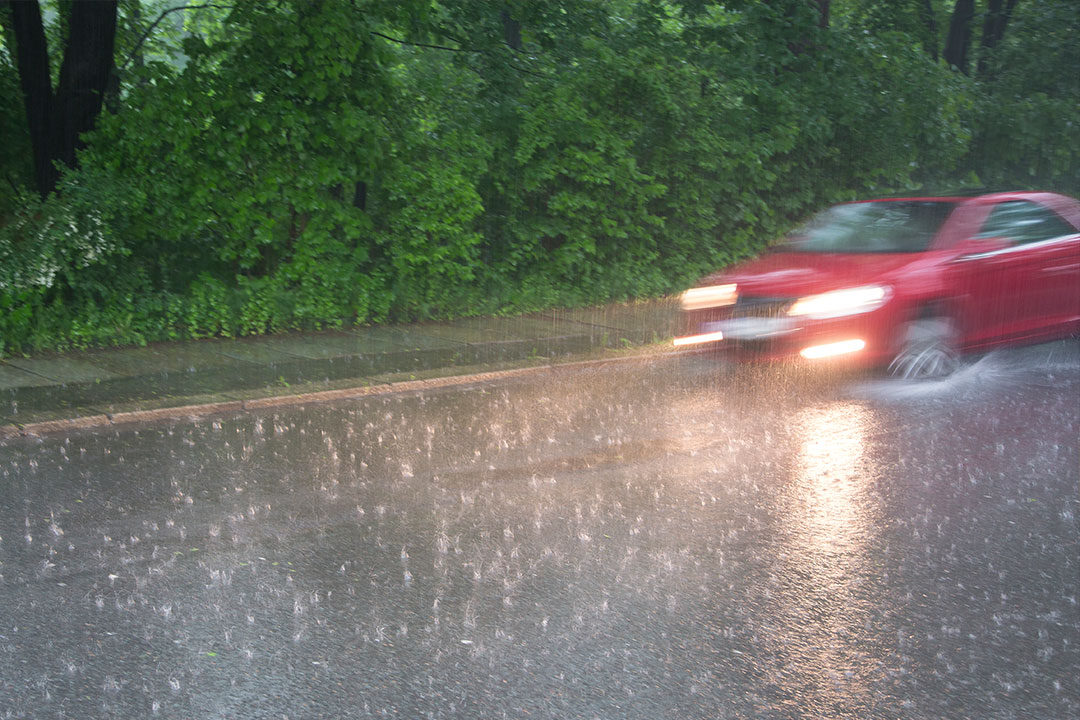St. Louis is all too familiar with rapid changes in weather. From 65 and sunny one day to a mixture of sleet and rain the next, Missouri drivers must be prepared for all weather conditions. According to the Department of Transportation’s Federal Highway Safety Administration, 75% of car accidents occur due to wet pavement and 47% of those are from rainfall annually. Many people may not understand what to do when hydroplaning impacts their drive, and our attorneys want to provide you with five key safety tips to keep in mind to avoid a car accident from hydroplaning in wet weather situations.
What is hydroplaning?
Hydroplaning occurs when your tires come in contact with a wet surface and skid or slide, causing your tires to lose traction with the road. This loss of traction results in a reduction of steering your vehicle or the inability to use your brakes.
What are some of the common causes of hydroplaning?
Hydroplaning happens often during wet weather conditions, but there are additional factors that may heighten a driver’s risk for a car accident. Some common scenarios include:
- Driving through deep puddles;
- Scattered water entering your lane from another car;
- Distracted driving;
- Driving under the influence;
- Driving at faster speeds or over the speed limit;
- Improper tire pressure;
- Driving on old tires with worn treads; or
- Turning too quickly into a turn or curved road.
While some of these scenarios are beyond our own control, each driver has a duty to exercise caution, follow the rules of the road and drive safely during wet weather conditions.
What to do when hydroplaning occurs during my drive?
When you start hydroplaning, the first thing you may feel is unsettled and scared that your car is losing control. Here are five safety tips our attorneys recommend to help you remain calm and reduce your chances of hydroplaning.
1. Steady at the wheel.
While hydroplaning is a scary sensation, it is important to remain calm and stay steady at the wheel. Moving your steering wheel too quickly to one side will increase your chances of losing control and spinning out into the road.
2. Slow down.
According to many automobile safety experts, hydroplaning is most likely to occur at speeds over 35 mph, and the likelihood of a car accident increases when reaching speeds over 55 mph. In instances of heavy downpours or snowfall, it is best to drive at reduced speeds and to turn on your hazards or pull over if visibility is a concern.
3. Don’t slam the brake.
The last thing you want to do if you are hydroplaning is slam on your brakes. Slamming on your brakes propels your tires forward over water as they are spinning on wet pavement — increasing your chances for an accident.
If you are not sure what to do when hydroplaning, just take your foot off the gas pedal, keep your steering wheel steady and allow your car to slow itself down. If you have anti-lock brakes, you may also slowly pump your brakes to regain control of your vehicle.
4. Do not use cruise control in wet weather.
Cruise control is great for a clear day out on the road, but on rain soaked roads, it may be devastating. Cruise control may delay your response to gaining control of your vehicle or you may resort to slamming on the brakes. Save cruise control for clear weather days and keep your foot on the pedals when rain or snow impacts your drive.
5. Check your tires.
Practice scheduled maintenance on your vehicle’s tires. Check tire pressure often, inflate tires with the change of seasons and be sure to schedule tire rotations on time to ensure the health and safety of your tires. If your treads look worn, consider a plan to replace your tires or consult a tire professional to make sure your tires are in proper working order.
Your Automotive Accident Attorneys
Sometimes accidents happen, but oftentimes they are the result of another person’s negligence. When you don’t know what to do when hydroplaning from another driver leads to an accident, our St. Louis automotive accident attorneys are here to help you from crash to court. We’ll be at your side to clear every roadblock we may face in your case, including legal proceedings, insurance claims and damage determinations. Our attorneys are here to build you up and fight for your case from start to finish. Have a case for us? Contact our team today to build your case with a free consultation.
